I placed my first “trade” back in 2009.
It was in a company called Sembcorp Marine which was trading at $3.28.
I planned to buy and hold it for the next 20 years—to be like Warren Buffet.
After a few days, the stock price dropped 10% and I freaked out.
So I did what was “logical” which was to stop the pain and exit my position.
And that, my friend, was my official entry into the financial markets.
Fast forward to today, I’ve been trading the markets for 11 years now.
I’ve lost money. I’ve made money. And I’m still a student of the markets.
So in today’s post, I’d like to share with you 11 of my biggest trade lessons I’ve learned from 11 years of trading.
Interested?
Then let’s get started…
#1: Consistent actions lead to consistent results
I remembered my first trading system.
It was a Bollinger Band mean reversion strategy.
You buy when the price is at the lower band and sell when it’s at the upper band.
The first few trades I did were winners, then the losses came and I figured this trading strategy doesn’t work.
So, I moved on.
Next, I chanced upon harmonic patterns.
I spent half a year learning how to draw these patterns (guess I’m a slower learner).
At the start, I had some wins but slowly, the losses kicked in and eroded all my profits.
Again, I told myself…
“This trading strategy doesn’t work. Let’s try something else.”
This brought me to the world of price action trading, support and resistance, candlestick patterns, etc.
Again, the same pattern repeated itself.
I had some winners, some losers, and I gave up the strategy.
One day, I asked myself…
“Why does this always happen?”
“Why am I not getting any consistency in my trading?”
“It’s always a few winners and then the losses pile up and take everything away.”
Do you know what I realized?
The problem was me.
I was hopping from one trading strategy to the next.
My actions were inconsistent. And because my actions were inconsistent, I got inconsistent results (duh).
So, don’t make my mistakes.
This is one of the important trade lessons you must remember…
If you want consistent results from trading, you must have consistent actions.
Stick to one trading strategy, master it—and then move on.
#2: Your trading strategy must have an edge
Now, being consistent with your actions is important in trading.
But that’s not all because you must also have an in edge in the markets.
You’re probably wondering:
“What does it mean?”
Simple.
This means your trading strategy must yield a positive result in the long-run.
If it doesn’t, then no amount of consistency will save you because you’ll end up a consistent loser.
Don’t believe me?
Then go down to the nearest casino and bet consistently.
You can be consistent with your risk management, bet size, games you place, etc.
In the long-run, you’ll still lose consistently because you don’t have an edge over the casino.
Agree?
And it’s the same for trading!
You must have an edge in the markets because without it, no amount of consistency, risk management, trading psychology, etc. will save you.
Next…
#3: This is the most important formula in trading…
You’re probably wondering:
“How do I know if I’ve got an edge?”
That’s a good question.
You can’t tell if you have an edge based on chart analysis, risk management, psychology, etc.
Instead, you must be able to quantify your edge.
Here’s the formula…
E = (average gain x winning rate) – (average loss x losing rate)
Now, don’t panic because the formula is easy to understand that even a 10-year old can do it.
Let me explain…
Let’s assume you have the following metrics from your trading…
- Average gain = $500
- Average loss = $400
- Winning rate = 60%
- Losing rate = 40%
Next, plug those numbers into the formula and you’ll get…
E = ($500 x 0.6) – ($400 x 0.4)
= $300 – $160
= $140
Now, what does $140 mean?
Two things…
#1: It means your trading strategy has a positive expectancy (otherwise known as an edge).
#2: In the long-run, you can expect to make an average of $140 per trade.
Now…
Your expectancy will vary from one trading strategy to the next (and from trader to trader).
It’s possible to have an edge with a low winning rate because your average gain is much higher than average loss.
Likewise, it’s also possible to have an edge with a higher average loss than gain because your winning rate is high.
#4: Follow the price
Here’s the deal:
You don’t have the time to crunch a vast amount of data, do fundamental analysis, identify key drivers of the market, etc.
So, how do you know which direction the market will go?
Turns out, there’s a simple solution to it.
Follow the price.
In other words, look at a chart and ask yourself:
“Is the price moving higher or lower?”
If it’s moving higher, then look for buying opportunities.
If it’s moving lower, then look for selling opportunities.
That’s it.
Here’s an example:
As you can see, the price is heading higher so we’ll look for buying opportunities—no shorting.
You might be wondering:
“What if the price is heading higher but fundamentals are bearish. Do I buy or sell?”
Based on my experience, it’s more profitable to follow the price regardless of fundamentals.
Here’s why…
When the market goes up on bad news, it’s probably because the market is already in an uptrend, and the bad news wasn’t “strong” enough to trigger a correction or reversal.
So focus on the price.
#5: Different markets have different behaviour
If you’ve read Technical Analysis books, most tell you the market trends 30% of the time.
But recently, I’ve discovered it’s not entirely true.
In fact, some markets trend better than others.
Let me prove it to you…
I applied a simple Trend Following strategy to different markets (credits to Andrea Unger for sharing it in Trading Mentors).
Here’s how it works…
- Buy the breakout of previous day high
- Hold the long position till the price hits the previous day low, and go short
- Hold the short position till the price breaks above the previous day high, and go long
- Rinse repeat over again
Now, I’ve applied this strategy to a portfolio of markets.
And here are the results of two markets that proves my point…
GBP/USD: Equity curve in an uptrend when a Trend Following approach is traded on it.
You see an equity curve that’s moving higher.
This tells you GBP/USD is a trending market as it makes money when a Trend Following approach is traded on it.
AUD/CAD: Equity curve making new lows when a Trend Following approach is traded on it.
Now, you see an equity curve that’s heading lower.
Clearly, AUD/CAD is a mean reverting market as it loses money when a Trend Following approach is traded on it.
So, the lesson is this…
Different markets have different behaviour.
If you know a market’s behaviour, you can stack the odds in your favour.
#6: The holy grail doesn’t exist
Why is that?
Simple.
A trading strategy is meant to profit from a certain “pattern” in the market.
But as you know, the market is always changing. It can move from an uptrend to a downtrend, range to breakout, etc.
This means a trading strategy can only profit from a certain market condition before it goes into a drawdown when market conditions change.
(An example: trend followers make money in trending markets but go into a drawdown when the market goes into a range.)
So if you agree with what I just said, then you can understand why the holy grail doesn’t exist.
But the good news is this…
You don’t need the holy grail to be a consistently profitable trader.
All you need is a trading edge, consistency with your actions, and…
#7: Proper risk management
Imagine:
There are two traders, John and Sally.
They both start with a $1,000 account
John is an aggressive trader and he risks $250 on each trade.
Sally is a conservative trader and she risks $20 on each trade.
Both adopt a trading strategy that wins 50% of the time with an average of 1:2 risk to reward.
Over the next 8 trades, the outcomes are Lose Lose Lose Lose Win Win Win Win.
Here’s the outcome for John:
-$250 -$250 -$250 -$250 = BLOW UP
Here’s the outcome for Sally:
-$20 -$20 – $20 -$20 +$40 +$40 +$40 +$40 = +$80
Do you see the power of risk management?
So here’s the deal:
As a trader, you’ll encounter losses regularly.
But with proper risk management, you can contain these losses till it feels like an “ant bite”.
Anyway, if you want to learn how to develop risk management in your trading, then read The Complete Guide To Risk Management.
#8: Trading is a get-rich-slow scheme
You’re probably thinking:
“Then what’s the point of being a trader?”
“No way. I want to make fast money so I can quit my job.”
“But I’ve heard of traders taking a few thousand dollars and turning it into millions.”
Yes, it’s possible to make big returns from trading in a short period.
How?
All you need to do is risk all your capital on one trade.
And if you get a 1-to-1 risk-to-reward ratio, you’ve just doubled your account.
So, what’s the catch?
It’s not sustainable.
Because if you encounter a single loss, that’s the end of your account.
So, how should you approach trading?
As a get-rich-slow scheme.
I know it’s not sexy.
But if you stick with it long enough, it’s possible to grow your account to 7-figures (and beyond).
Here’s how…
- Let’s say you have a $5,000 trading account
- You contribute $5,000 to your account each year
- You earn an average of 20% a year
Now if you do this consistently for 30 years, do you know how much money you’ll have?
$8,278,170.
Yes, you see that right, $8,278,170.
In other words, when you think long-term, the sky is the limit.
Unfortunately, most traders are fixated in the now that they miss the big picture.
Don’t be one of them.
#9: Diversification works
Recall:
I said the holy grail doesn’t exist because market conditions change.
But, what if I tell you there’s “secret” technique which allows you to profit even in different market conditions.
Do you want to learn more?
Great!
So here’s how it works…
You want to diversify across different trading strategies.
So if one trading strategy underperforms, the other profitable trading strategy can “cushion” the damage (and possibly even keep your portfolio in the green).
You’re wondering:
“But what if both trading strategies underperform at the same time?”
That’s a good question.
The key here is to trade multiple uncorrelated trading strategies.
Let me explain…
You’re about to see the backtest result of a trend following system from 2000 to 2020.
As you can see, it had 3 losing years in 2009, 2012, and 2018.
It’s a decent trading strategy and it has its weakness.
So, how can we improve on it?
By adding in another uncorrelated trading strategy.
So, let’s add another trading system to the portfolio—the pullback stock trading system.
Here is the result of the pullback stock trading system from 2000 to 2020.
For this trading system, we had 3 losing years in 2008, 2011, and 2018.
Now, what if we assign 50% of our capital to the trend following system and 50% of our capital to the pullback stock trading system, what would our portfolio results be?
Here’s the result…
As you can see, we only have 1 losing year (instead of the 3 we had earlier).
Now, can you see the power of diversification?
Pro Tip:
If you want to achieve better returns relative to risk, you can diversify across 3, 4 or even 5 uncorrelated trading systems.
#10: Have another source of income
Here’s the truth:
No matter how good you are as a trader, you’ll encounter losing streaks, losing weeks, and possibly even losing years.
If you do not prepare for it, you’ll face difficulties putting food on the table, paying your bills, etc.
And in such scenarios, it’s difficult to make good trading decisions because you’re trading with money you can’t afford to lose.
You’ll average into your losses hoping to make it back quickly or widen your stop loss so you don’t lose your money.
So what can you do about it?
Well, that’s where having another source of income helps.
It could be having a job, an online business, affiliate marketing, etc.—the more sources you have, the better.
Here are some ideas you can think about:
- Affiliate marketing (recommend products & services you believe in and get paid for it)
- Coaching program
- Online course
- Earn advertising fees (from YouTube, Google, etc.)
Now, building multiple sources of income is like digging a well.
You want to focus on digging a well till water comes up before you move on and dig another well.
Otherwise, if you dig many wells at once, you’ll end up with no water because you didn’t dig deep enough.
And it’s the same thing for building multiple sources of income.
#11: Indicators are not evil
Often, I’ve seen traders lose money in the markets and they’ll blame indicators for it.
They say things like:
“Indicators are lagging tools and that’s why it doesn’t work.”
Well, guess what?
Price action, candlestick patterns, and chart patterns are lagging tools as well.
Let me explain…
- A daily timeframe candle is only formed after the market close
- A chart pattern can only be developed after a series of candles
So, isn’t it a lagging tool as well?
Yes, it is.
So my point is this:
Yes, indicators lag the market but it doesn’t mean they are useless (or evil).
So now the question is…
How do you correctly use trading indicators?
Here are three things you must do…
#1: Understand how the trading indicator works
You must know what makes the indicator goes up (or down), how the value is derived, and the concept behind it.
For example:
How does the moving average indicator work?
Well, it’s an indicator that calculates the average price over a given period, and appears as a “squiggly line” on your chart.
Now, this brings me to…
#2: Know the purpose of your trading indicator
Once you understand how an indicator works, the next thing is to know the purpose of it.
In other words, what can it be used for?
So using moving average as an example, it can be used to define the trend, identify your area of value, manage your trades, etc.
And finally…
#3: Not more than 1 indicator from the same category
This means you shouldn’t have multiple indicators with the same purpose.
For example:
If you use moving average to define the trend, then don’t add in the ADX indicator because it serves the same purpose.
Or if you use the RSI indicator to identify overbought/oversold areas, then don’t use the Stochastic indicator because it behaves similarly.
Anyway, if you want to learn more about using trading indicators, then go read Why You Lose Money With Trading Indicators And How To Avoid It.
Bonus: Know your timeframe
Most charting platforms allow you to trade across multiple timeframes like 5-min, 1-hour, daily, weekly, etc.
But here’s the thing:
Just because you have access to multiple timeframes doesn’t mean you need to use them all.
For example:
If you’re trading on the 15-min timeframe, then the monthly timeframe is irrelevant because it’s too “far away” from your trading timeframe.
Now you’re probably wondering:
“So how do you know which timeframes to pay attention to?”
Here’s how…
- Identify your trading timeframe
- Define your higher timeframe using a factor of 4 to 6
I’ll explain…
#1: Identify your trading timeframe
In other words, you must know the timeframe relevant to your trading style.
Here are some guidelines:
- If you’re a day trader, then you can trade between the 3-min and 30-min timeframe
- If you’re swing trader, then you can trade between the 30-mins to 4-hour timeframe
- If you’re a longer-term trader, then you can trade from the 4-hour timeframe and above
Next…
#2: Define your higher timeframe using a factor of 4 to 6
Recall:
I said if you are trading on the 15-min timeframe, then the monthly timeframe is irrelevant because it’s too “far away”.
So now the question is…
How do you know what’s a relevant higher timeframe?
That’s where a factor of 4 to 6 comes into play (a technique I’ve learned from Adam Grimes and Alexander Elder).
Here’s how it works…
Take your trading timeframe and multiply it by a number between 4 to 6.
Here’s an example…
- Your trading timeframe is 15-min
- If you multiply it by 4, you’ll get 60-min
- This means your higher timeframe is the 60-min chart
Now you can also use a factor of 5 or 6 if that’s what you prefer. But whichever multiple you choose, please be consistent with it.
Anyway, if you want to learn more trade lessons about multiple timeframes analysis, then go watch this training…
Conclusion
So here are the trade lessons you’ve learned:
- If you want consistent trading results, then you must have a consistent set of actions
- Your trading strategy must have an edge in the markets, or nothing else matters
- Your edge can be defined as E = (average gain x winning rate) – (average loss x losing rate)
- Follow the price—not news, sentiments, or opinions
- Not all markets are the same. Some markets trend better than others
- The holy grail doesn’t exist
- Trading is a get-rich-slow scheme
- Diversify your trading strategies and income
- Know the purpose of your trading indicator
- Know your timeframe
Now here’s what I’d like to know…
What’s the #1 trading lesson you’ve learned this year?
Leave a comment below and share your thoughts with me.


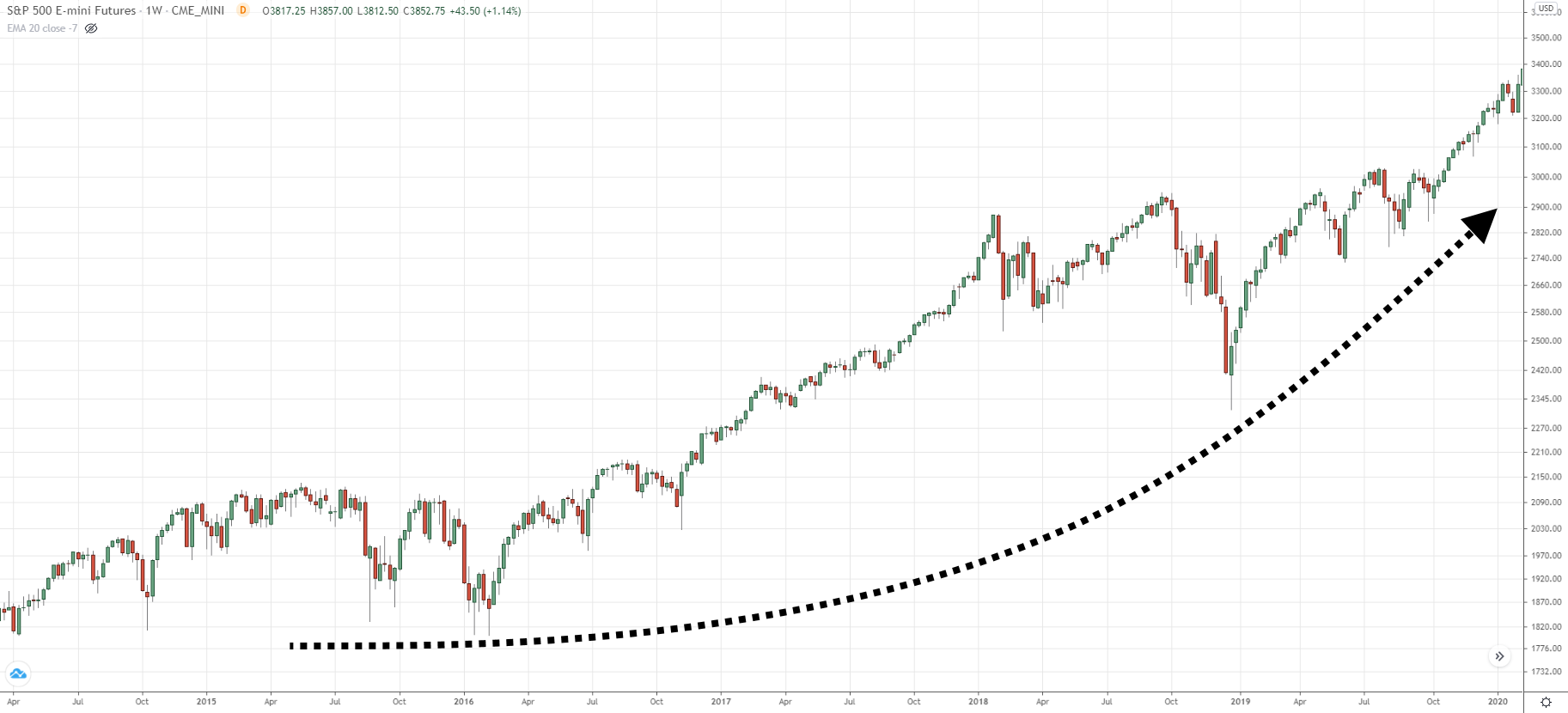
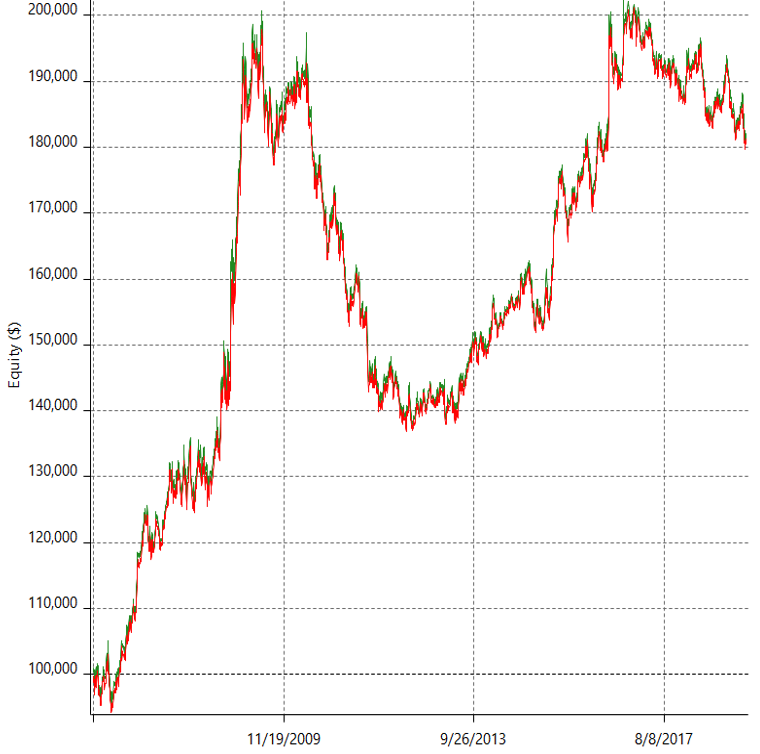
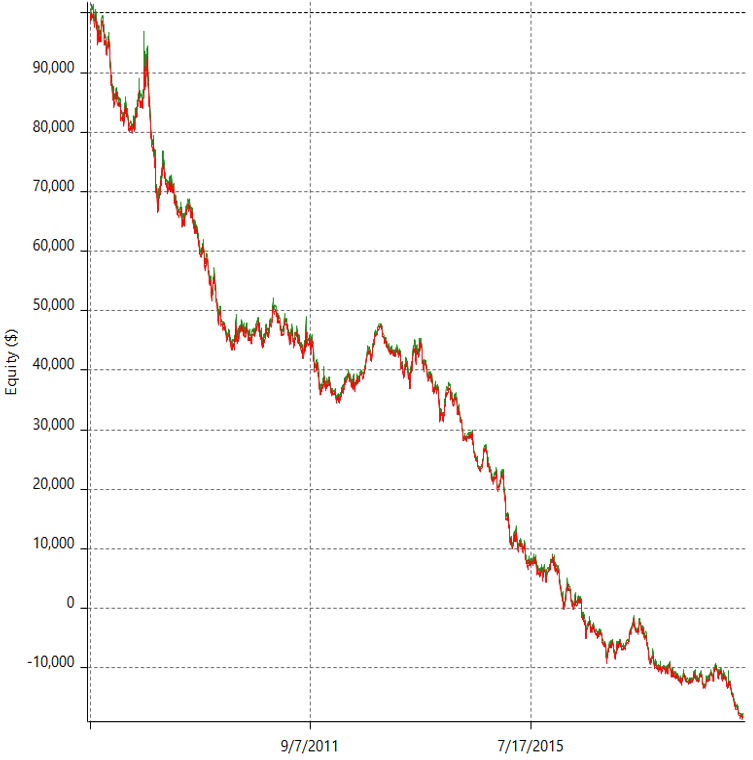
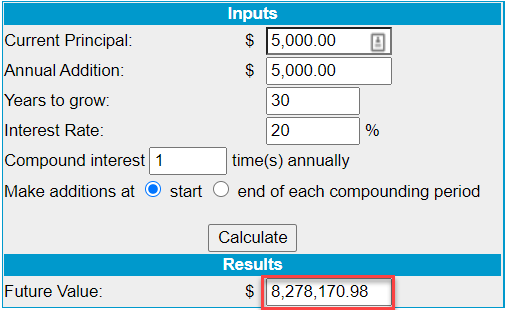
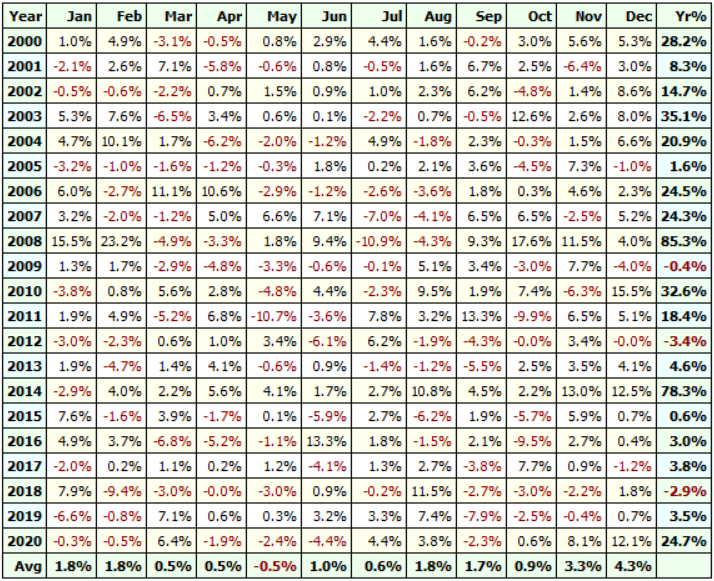
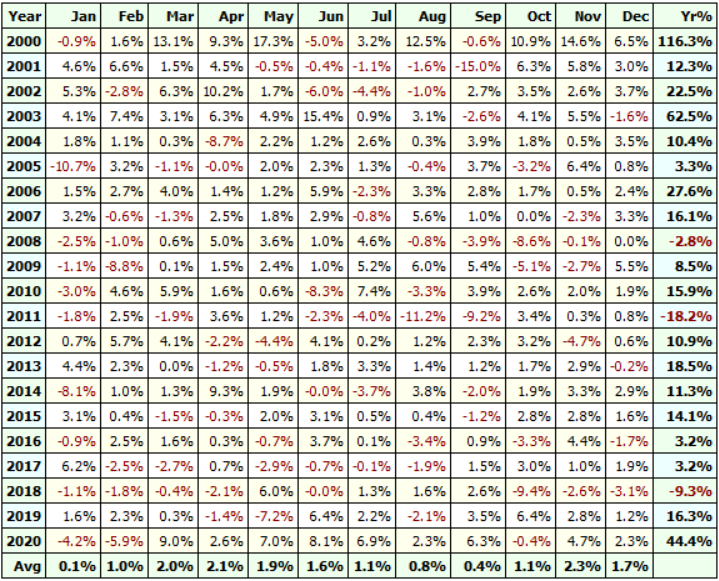
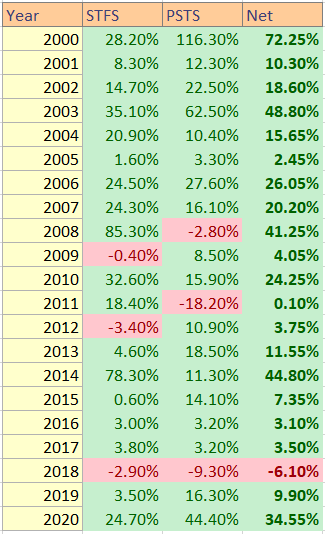
Timeframe 4-6 understood, thanks. Formula for edge not understood , nor diversifying trading strategies and trading indicator. Warm regards, Jean
Glad to hear that, Jean!
Ho shit my mind was completely cleared by ur all lessons thanks a lot
You are welcome, Anjaneyya!
Consistency
What a multiplication sir ji
$400x.40=240
I like the way you simply lay out the lessons.
Thank you.
Glad to hear that, Herman!
Enlightening.
Thank you, Shreyash!
Good job, I just hope to become a profitable trader under your mentorship.
Awesome to hear that, Samuel!
Very explosive. Well-done sir.
Thank you, Chukwuanugo!
proper risk management with consistent actions leads to profits.
Thanks for sharing your more than a decade learning & experiences.
You are welcome, Raheel!
Wow! These are all fantastic lessons. Thanks for sharing your experience.
Thank you, Goddard!
Risk Control/Management is King! = your foundation/SYSTEM, whereby u can plug all onto.
Very simple n very well put. Tq Rayner.
Thank you, Veelayudan!
thanks. things were more clear.
Glad to know that, Gopal!
You are the best! With this 11 bullets in one’s arsenal, profitability will be the result.
Thank you, Obinna!
Hi Rayner, I can’t be wrong to say your coaching and insights (if followed) yields profound results!
Consistent small wins is key to building a healthy trading psychology… don’t jump the ladder.
Thank you, Daniel!
Love it. Great stuff mate!
You are most welcome, Jay!
I am going to make a point to read this post regularly. Each time I come back, the same text has deeper meanings, I see things clearer!
Glad to hear that, Chih!
The holy grail does not exist.
Thanks you so much for reminding this. You are awesome Rayner
We’re glad to help, Rohan!
Cheers!
Great. Keep the good works❤️
Thanks, Samclef!
Hey Rayner, I have a question for #5 Different markets have different behaviour”
Now when you mention “buy the breakout of the previous day high” does it mean buy when :
a) The current candle close is higher than the previous day high or
b) As long as the current candle high is higher than the previous candle high
The trading lesson i have learned this year is Trading is get Rich low scheme in respective of last year
Thank you for sharing, Abubakar!
I’m an option trader. Do these strategies apply to binary option as well?
~Kharma
Hi, Kharma!
Rayner does not recommend binary options trading as the odds are against you (they devised the trading in a way that they are the casino, and you are the gambler).
Cheers!